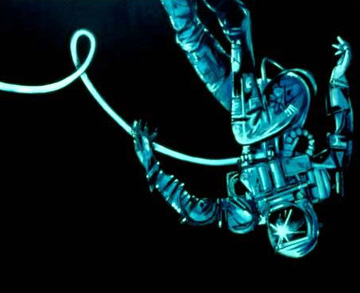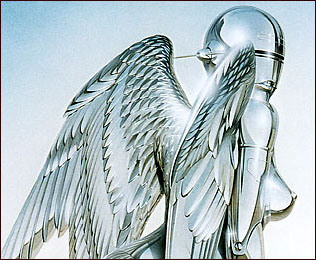
Astronauts in space frequently get the following problem: they cannot feel where up and down is in their body anymore. It's like a radical version of motion sickness...Every astronaut knows how to help his body if he has that problem. You just hit very hard on the heel from below, on the sole of the shoe, and instantly the body image locks in again and there is a conscious experience of down and up.
What that shows is that the human self-model is just a virtual model. It depicts a possibility, philosophically very interestingly, as a reality. It's just the best hypothesis the system has about its own current state; and if it's under constraint by input, which it is in a spaceship, then it can become highly context sensitive...So the self-model is a simulation, a virtual model.
The conscious self-model is that part of the mental self-model, which is currently embedded into the highest-order, integrated representational structure: the global model of the world...Human beings have an integrated self-model in their brain, not much of it is conscious, but of course it is clear that part of your unconscious self-model can have causal properties...So there's a conscious and an unconscious layer, and what is conscious is variable...
|
All representational states which are embedded into the currently active self-model gain the additional higher-order property of phenomenal "mineness", that is, a nonconceptual sense of ownership...something that a non-linguistic creature could have as well...like an animal. If this integration process is disturbed, different neuropsychological syndromes or altered states of consciousness result. Here are some examples.
How many of you know what unilateral hemineglect is? Happens every day in hospitals around the world. Somebody wakes up after surgery and...finds a dead leg in his bed, tries to throw the leg out, falls out of bed with it, realizes the dead leg has grown to his own hip. The nurse comes and he says, "This is not my leg!"...The patient will say, "I cannot explain this but this certainly is not part of my body even if it is fixed to me." This is something that's very well documented and studied and it's exactly the sense of ownership that is missing.
In Alien Hand Syndrome my arm performs goal directed actions without my own control. The interesting thing about that syndrome is you have goal directed actions, typically with a sense of intermanual conflict. The Alien Hand Syndrome patient will pick up the phone and the other hand will slam the thing down and interrupt it. One hand will button down the shirt, the other hand will button it up...Some patients even begin to attribute personality to that limb because it is clearly goal directed. So you can have goal directed motor behavior which cannot be integrated into your conscious self model.
"Consciously experienced thoughts are not my own thoughts anymore"...If you cannot integrate your own cognitive processing into your own self-model anymore, you cannot experience your own thoughts as your own anymore.

|
Every day people come into emergency wards and say things like this, "Doctor, I am a robot. I am transformed into a mechanical puppet. My volitional acts are not my own volitional acts anymore." You have that in depersonalization. You feel remote controlled. You lose...executive consciousness, the conscious experience of not only initiating an act but of carrying it through.
|
You also have states where people say, "I am the whole world. All events in the world are controlled by my own volitional acts." So...the self model can also expand to the boundaries of the world. At a psychiatry institute in Germany they had 2 patients there and one of them was standing by the window all day making the sun move and experiencing every little movement as self-caused. The other guy was looking down into traffic making the cars drive, the puppets walk, and turning the traffic lights on and off. So there are phenomenal states in which every event that is consciously experienced is experienced as self-caused...
Selfhood. What is it? It's the existence of a single, coherent, and temporally stable self-representation which forms the center of the overall representational space. If this representational module is damaged, if it disintegrates, or if multiple structures of this type alternate within the system you get different neuropsychological syndromes and different altered states of consciousness. Here are some examples for you.
In Anosognosia and Anosodiaphoria you have a loss of higher-order insight into existing deficits, for instance in blindness denial. After a massive cortical infarct...you will have people who are totally blind and will never see anything in their lives, not because anything is wrong with their eyes, but because something is wrong with their brain. They show all functional signs of being blind, they bump into walls, they fall over furniture, but they claim to still be seeing people. If you ask them how many fingers am I holding up they say, "It's kind of dark in here and I'm not interested in your experiments."...and then they start to confabulate (lie). In Dissociative Identity Disorder the system uses different and alternating self-models in order to deal with extremely traumatic and socially inconsistent situations such as sexual abuse by a parent.
- Finally Some One: Reflections on Thomas Metzinger’s "Being No One" PDF
Images
Astronaut by Paul Thomas—1977-81
Angel by Hajime Sorayama